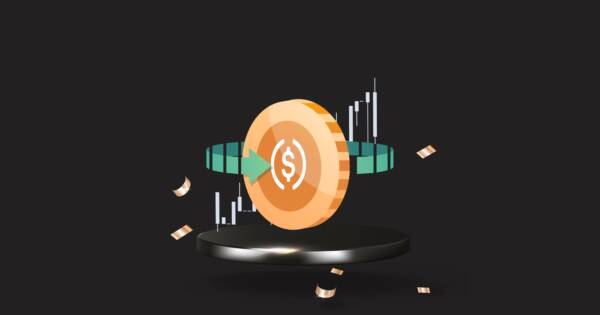One of the concerns that many people have about the future right now is whether inflation will return in a big way. During times like these, many people are thinking not just about preserving their capital but also their purchasing power. Some people will say that stocks are the way to protect against long term erosion. However, having too much of your nest egg in stocks can also decimate a portfolio — in the short term, at least. So, what can you do? Well, treasury inflation protected securities (or TIPS) are one way to protect your investment and maintain your capital value.
Capital Preservation
Capital preservation is not just about making sure that your money is safe. It should also be about maintaining your buying power over time. Unfortunately, inflation can erode your buying power. We have a whole article about inflation right here. In summary, though, inflation is when prices rise and your dollar doesn’t buy as much as it used to.
One way to help preserve your capital is to invest in Treasury Inflation Protected Securities (TIPS). You can get started investing in TIPS fairly easily. Ideally, you can them in your portfolio to help offset some of the effects of inflation. Let’s get right into it.
How Do TIPS Work?
Basically, TIPS are meant to help your money keep pace with inflation. You invest your principal in these Treasury securities. Then, you earn interest via coupon payments (like a bond). In addition, your principal is adjusted twice a year for inflation. It’s calculated based on the Consumer Price Index (CPI). So if inflation is on the rise, your principal will increase. That means that even though the coupon payment is based on a fixed interest rate, you will earn more money since the principal is higher.
Over time, as inflation rises, your capital will keep pace. That means your buying power won’t be diminished. That’s the theory, anyway. On the other hand, if there’s deflation, there’s a chance you’re your capital will get adjusted downward. Fortunately, that’s not quite as much of a worry as inflation, in reality. That’s because one of the Federal Reserve’s dual mandates is to maintain a slight but stable inflation rate.
If that’s not convincing enough, you’ll be happy to know that the last time we had deflation was in the 1920s during the Great Depression. And even then, deflation only lasted a few years. So the overall risk of deflation is extremely low.
Risks To Investing In TIPS
TIPS come with some risks. just like any other investment. While TIPS can be helpful in a portfolio, it’s important to be aware of the possible risks. Here are some things to keep in mind.
The fixed interest rate is generally lower on TIPS than it is for “regular” bonds. This means that when there is barely any inflation, there’s a risk that the principal on your TIPS may go down in value. However, investors are guaranteed at least the original principal amount (if held to maturity). This also means that even when there’s rampant inflation, your coupon payments are going to be low. You may need to sell some of your principal investment if you need the income.
There is also a chance that the United States could default on its debt. If that happened, you could lose your principal as well as future interest. However, this is generally viewed as only a theoretical risk. That’s because while the United States have had government shutdowns and thus a delay paying coupon payments, the country outright defaulting on its debt obligations is unfathomable. Such an event would likely destabilize the entire world economy as we know it. In other words, it would become a catastrophe. Your investment in TIPS would likely be the least of your concern, at that point.
You Still Owe Taxes Of TIPS
Even though you don’t get a check when the principal value of your investment is adjusted, you are still required to pay taxes on that twice-yearly increase. That’s why most people will tell you to put these investments in tax advantaged accounts.
However, TIPS (like other treasury bonds) aren’t taxed at the state and local level. So, speak to your CPA or make your own calculation before you blindly throw all of your allocation in your IRA. Sometimes it’s best to spread your investments around a little bit.
How to Actually Invest in TIPS
It would be wise to learn the various different options available to you and how they are different. For instance, there are individual TIPS — all with different maturities. Then there are TIPS funds. There’s even something called an I-Bond, which is a different investment vehicle altogether.
Before you take the plunge and put your hard earned money into these securities, make sure you understand the difference. Do a little bit more research (or talk to an investment professional). Then pick the option that’s right for you.
Individual TIPS
Individual TIPS are the simplest of the bunch to understand. They act like an individual bond. They can be purchased at auction or from a secondary market, via the various brokerage firms.
Just like with other individual bonds, it’s best to plan on holding them to maturity. That’s because individual investors usually don’t get good offers for their bonds should they need to sell early. And they get downright bad deals when they buy them on the secondary market.
Where To Buy
Alternatively, individual investors can also purchase TIPS directly from TreasuryDirect.gov at auction in multiples of $100. The website isn’t the most user friendly, we have to admit. However, it works well enough that you shouldn’t avoid it just because of the dated look.
You should also know that if you buy TIPS directly at auction on the government website, then you have to hold onto the bonds for at least 45 days. This is hardly a barrier though, since any investor who isn’t really thinking of at least holding the bond for 45 days shouldn’t buy them in the first place.
TIPS Funds
Investing in TIPS via a fund is also an option. A major advantage of owning a fund is that it’s easier to buy and sell these on the open market. There, you’ll always get a fair price for your trade. Another plus is that the investment is available in any brokerage account. That makes it easy to include the investment in any portfolio, whether you are talking about a 401(k), taxable account, or a Roth IRA.
The downside is that you have to pay management fees via the expense ratio, which is standard for any fund. Funds also keep their maturities reasonably constant. This means that instead of holding onto the bonds they buy until maturity, they continually sell older bonds and buy new ones. This will come with tax and capital gains/losses consequences.
A Note On Series I Bonds
There’s a third alternative. It’s actually one of the best ways to invest to combat inflation. Technically, these savings bonds are different than TIPS but they act very similarly to TIPS. The beauty is that the treasury department introduced the Series I Savings Bonds, also known as the I-Bond, for the little guys. It really has everything TIPS offers and more.
I-Bonds basically have two components. The first is a fixed interest rate, that stays the same for the life of the bond. The second is an inflation rate that is set twice a year. I-Bonds earn interest for 30 years. However, unlike TIPS, I-Bonds never lose principal — even if you cash them out early. This means that even if interest rates shoot back up to historical averages, your I-Bonds are safe from principal destruction if you have to cash out early.
There Are Some Restrictions
Can’t wait to plow your entire bond allocation to I-Bonds? Not so fast. The treasury really wants this to only be available to the Average Joe. That’s why they limit individuals to buying only $10,000 of I-Bonds every calendar year. This is still a decent amount. It should easily serve anyone who just wants to start saving through I-Bonds. However, you can’t just switch everything to I-Bonds if you already have a decently sized nest egg.
Additionally, you earn interest for up to 30 years but you’ll lose three months of interest if you cash them out before holding onto them for at least five years. Furthermore, you have to at least hold the I-Bonds for one year before you can even be allowed to make a withdrawal. As you can see, these are not for short-term investing or quick gains.
Ways To Increase The Purchase Limit
If you want to build a I-Bonds portfolio, then I suggest you start now. Over time, you can slowly accumulate more. Still, there are ways to increase that $10,000 yearly limit. For instance, the $10,000 yearly limit is per individual. That means that a family of four can theoretically buy $40,000 worth of I-Bonds every year.
Some people also buy more by buying up to the limit with a trust and then double the amount with their individual accounts. However, having assets outside of a trust defeats the purpose of having a trust in the first place. Make sure you understand the consequences before you take the plunge.
Finally, you can opt to have some of your tax refunds be used to purchase I-Bonds. If you choose this option, then the IRS will mail you the savings bonds in paper form if you complete Form 8888 with your tax return. I know some people even pay more to the IRS over the course of the year through estimated tax payments just to buy more I-Bonds. Note though that you can only get an additional $5,000 in I-Bonds every calendar year and they will be in paper form. Luckily, the Treasury has recently added the ability for you to convert the paper I-bonds to electronic form. Just go to TreasuryDirect.gov for instructions.
The Bottom Line
TIPS can be great way to help you limit your exposure to inflation, while helping you keep your original capital relatively safe. Many people feel safer about the situation when they have a little diversity in their portfolios — and when some of that diversity includes bonds.
Carefully consider your situation and your investing goals, including how close you are to retirement. Even if you want to invest in bonds, you should consider the merits of different types of bonds including TIPS. I highly recommend I-Bonds, but TIPS can work really well for certain individuals too.
You can also consider bond funds or other investments depending on your goals. If you aren’t sure about what you should do, you can consult an investment professional or a knowledgeable financial advisor. They will help you put together an investment plan.








